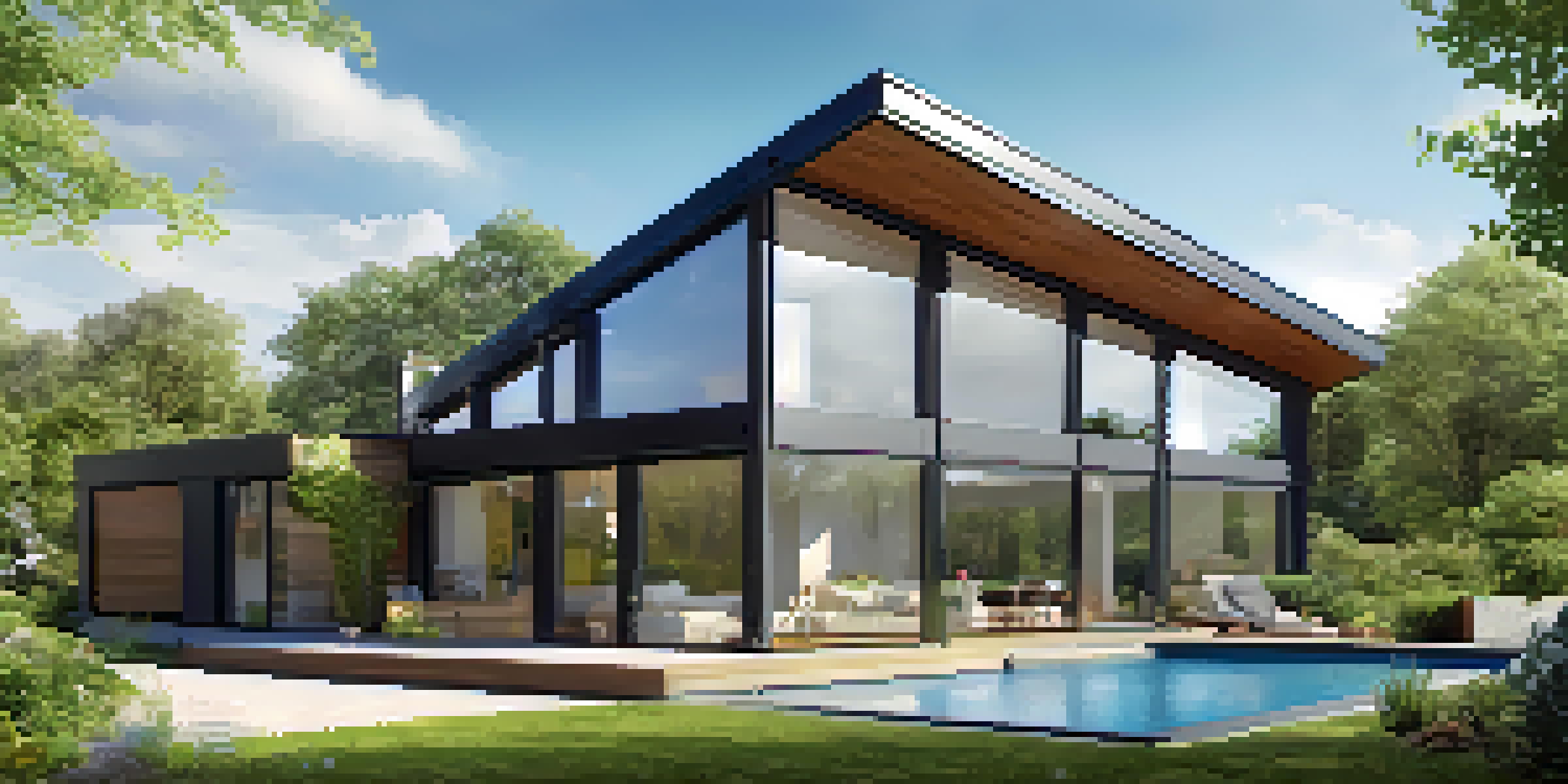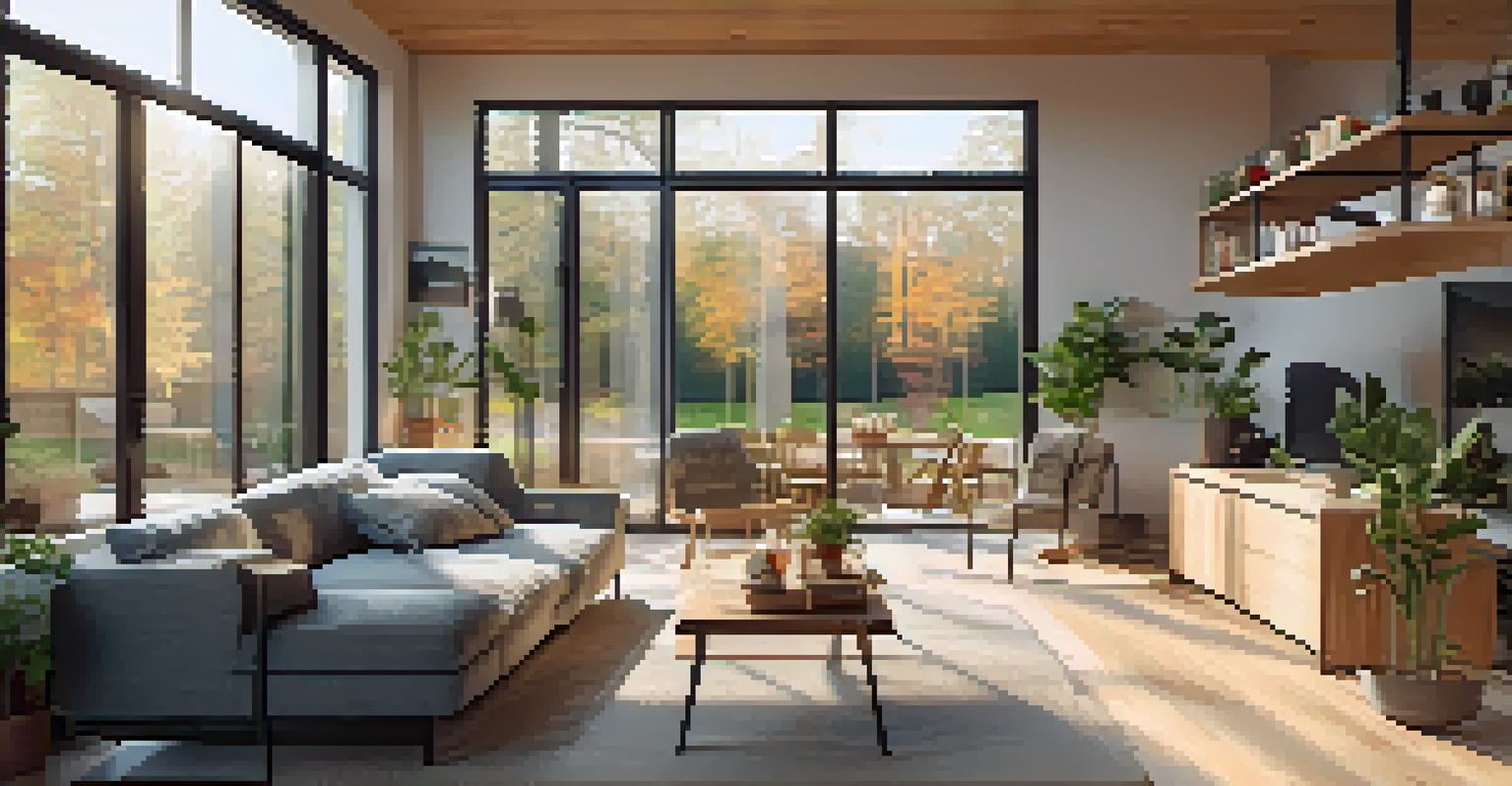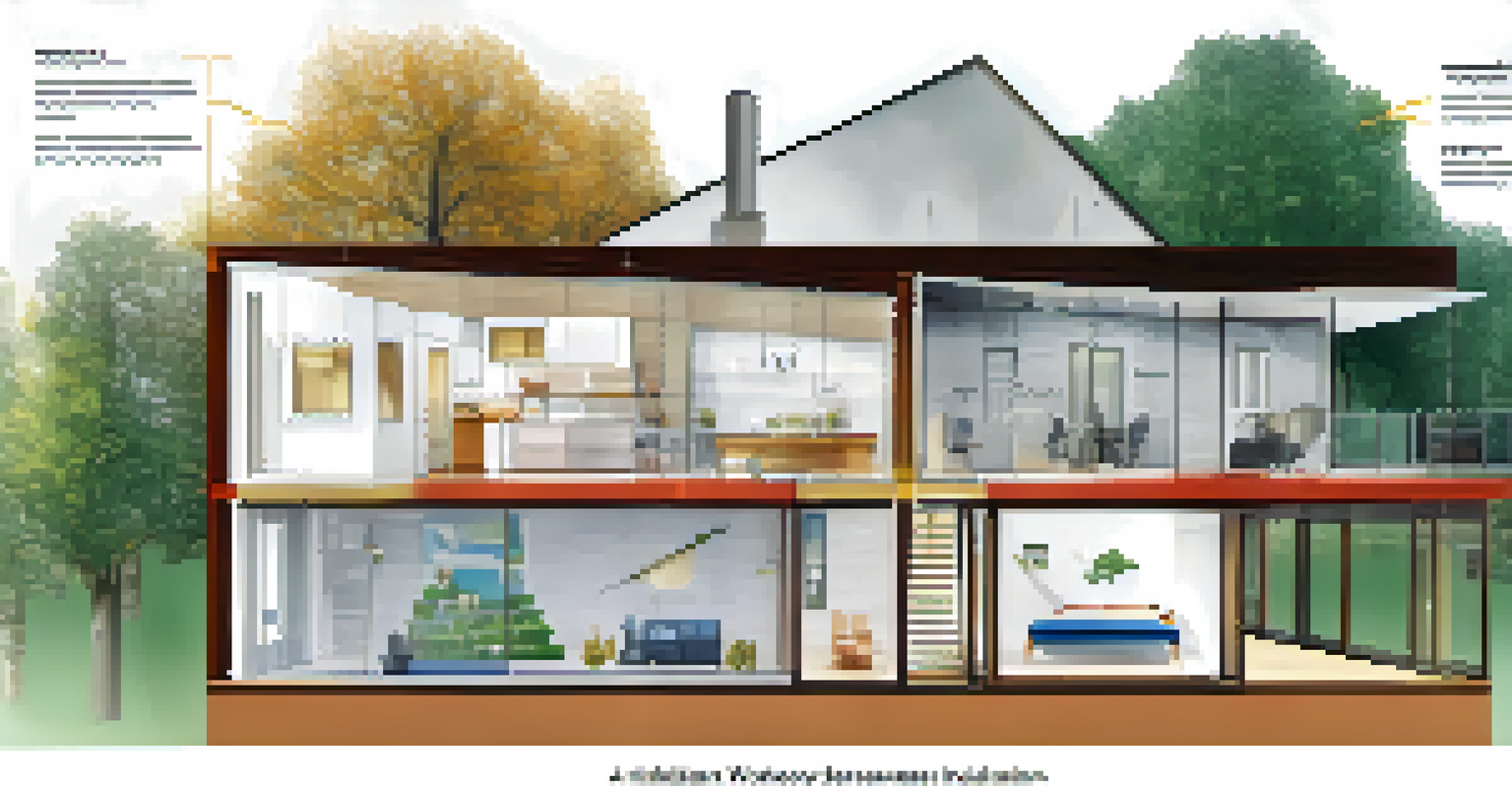Exploring Passive House Standards for Eco-Friendly Living

Understanding Passive House Standards and Their Importance
Passive House standards are a set of rigorous energy efficiency guidelines that aim to reduce a building's ecological footprint. Developed in the late 20th century in Germany, these standards prioritize insulation, ventilation, and energy efficiency, making homes comfortable while using minimal energy.
The best way to predict the future is to create it.
At the core of Passive House design is the concept of creating buildings that maintain a stable, comfortable indoor climate without relying heavily on conventional heating or cooling systems. This approach not only lowers energy bills but also reduces greenhouse gas emissions, contributing to a healthier planet.
In essence, adopting Passive House standards means investing in a sustainable future. By focusing on energy efficiency, we can combat climate change and promote eco-friendly living, making it a crucial consideration for today's homeowners.
Key Features of Passive House Design
One of the standout features of Passive House design is superior insulation. This isn’t just about thick walls; it involves a whole-system approach that ensures minimal heat loss during winter and keeps interiors cool in summer. Imagine wrapping your home in a cozy blanket that keeps the temperature just right, all year round.

Another important aspect is the airtightness of the building. A Passive House is designed to prevent unwanted air leaks, which can undermine energy efficiency. Think of it as creating a perfectly sealed jar; once you close it, nothing gets in or out, ensuring that your indoor climate remains stable.
Energy Efficiency Reduces Costs
Passive Houses can cut energy consumption by up to 90%, significantly lowering energy bills for homeowners.
Lastly, energy-efficient windows play a significant role. These windows are triple-glazed and often positioned to maximize natural light while minimizing heat gain. This means you enjoy bright, airy spaces without overworking your heating or cooling systems, making your home both inviting and eco-friendly.
The Role of Ventilation in Passive House
Ventilation is crucial in a Passive House, ensuring that fresh air circulates without compromising energy efficiency. This is typically achieved through heat recovery ventilators (HRVs), which exchange stale indoor air with fresh outdoor air while reclaiming heat from the outgoing air. It’s like getting a breath of fresh air without losing warmth on a chilly day.
Sustainability is no longer about doing less harm. It's about doing more good.
Proper ventilation not only maintains indoor air quality but also prevents issues like mold and condensation, which can arise in tightly sealed homes. By ensuring a constant flow of fresh air, residents enjoy healthier living conditions, which is essential for both comfort and well-being.
Moreover, this system allows homeowners to enjoy the benefits of fresh air without the energy costs typically associated with traditional ventilation methods. By integrating smart technology, Passive Houses optimize air exchange, making energy savings a seamless part of everyday life.
Benefits of Living in a Passive House
Living in a Passive House offers numerous benefits, starting with significantly reduced energy bills. Homeowners often see energy consumption cut by up to 90% compared to standard homes. Imagine the peace of mind that comes with knowing your energy expenses are drastically lower, allowing you to allocate funds elsewhere.
Beyond financial savings, these homes provide unparalleled comfort. The consistent indoor temperature and reduced drafts create an inviting environment, making it a joy to come home after a long day. It’s the difference between walking into a cozy haven versus a chilly or stuffy space.
Comfortable Indoor Climate
These homes maintain a stable, comfortable climate year-round, enhancing the overall living experience.
Lastly, there’s the environmental impact. By choosing a Passive House, you’re not just benefiting yourself; you're also contributing to a larger movement toward sustainable living. Every energy-efficient home helps to decrease our collective carbon footprint, making a positive difference for future generations.
Passive House Certification Process Explained
The journey to becoming a certified Passive House involves several steps, starting with a thorough design phase. Architects and builders must adhere to strict guidelines and utilize specialized software to ensure compliance with Passive House standards. This is akin to preparing for a big exam; preparation and attention to detail are key.
Once the design is complete, the construction phase begins, focusing on implementing all the necessary features, from insulation to ventilation systems. Each aspect is meticulously checked to ensure it meets the standards, ensuring the final product delivers on its promises of comfort and efficiency.
After construction, a certification process verifies that the building meets all requirements. This final evaluation is crucial, as it confirms that the home performs as designed. Achieving Passive House certification is a badge of honor for builders and homeowners alike, showcasing a commitment to sustainability.
Common Myths About Passive Houses
One common myth is that Passive Houses are too expensive to build. While it’s true that initial costs may be higher, the long-term savings on energy bills often outweigh these upfront expenses, making them a smart investment. It’s like paying a little extra for quality shoes that last longer; they save you money in the long run.
Another misconception is that Passive Houses are overly complex and difficult to maintain. In reality, once established, these homes often require less maintenance than traditional houses due to their durable materials and systems designed for efficiency. This means more time enjoying your home and less time worrying about upkeep.
Sustainable Living Benefits the Planet
By adopting Passive House standards, homeowners contribute to reducing greenhouse gas emissions and promoting eco-friendly living.
Lastly, some believe that Passive Houses lack aesthetic appeal. However, designers and architects are continuously pushing boundaries, creating stunning homes that are as beautiful as they are energy-efficient. The combination of style and sustainability proves that you can have the best of both worlds.
Getting Started with Passive House Living
If you're interested in transitioning to a Passive House, the first step is to educate yourself on the principles and benefits. Numerous resources are available, from books to online courses, that can guide you through the process. Think of it as embarking on a journey; the more you know, the better prepared you'll be.
Next, consider consulting with professionals who specialize in Passive House design and construction. Collaborating with experienced architects ensures your vision aligns with sustainable practices, resulting in a home that meets your needs while adhering to Passive House standards.

Finally, whether you're building new or renovating an existing home, small changes can lead to significant impacts. Simple steps like improving insulation or upgrading windows can set you on the path to energy-efficient living, making the transition to a Passive House more attainable than you might think.